「初代 諏訪蘇山 没後百年記念展 in 妙心寺 大雄院 〜初代蘇山の遺した石膏型を次代へ collaboration with KYOTO Design Lab〜」 2021年10月7日(木)〜11日(月)開催
100年前の石膏型を復元する。次代に継承すべきプロセスとは。
「青磁の蘇山」として高い評価と人気を誇る陶芸家・初代 諏訪蘇山(1851-1922)。その美しい釉色だけでなく、器の形状や装飾にも優れた特徴を持っており、明治初期にヨーロッパから日本に伝わった石膏型を用いた成形技術をいち早く取り入れて我が物とし、より精緻な造形・装飾と再現性(量産性)の高さとの両立に成功します。
現諏訪蘇山工房には当時の石膏型が大切に保存されているものの、百余年の歳月により経年劣化が避けられず、そのディテイルが崩れるものも出てきており、往時の高い技術力を後世に残すことが危ぶまれる事態となっていました。
そこでKYOTO Design Labが協働し、石膏型を三次元測量したデータに基づきデジタル補修を行い、デジタルファブリケーション技術を活かして復元再生することを目指し、2019年10月に「初代 諏訪蘇山アーカイブ化プロジェクト」が立ち上がりました。
本展は、その成果とプロセスをご覧いただくことにより、次代への伝統技術の継承に新たな光を当てるものです。2022年は初代の没後100年にあたり、何よりこれを機に多くの方々に初代 諏訪蘇山の魅力を知っていただきたく、ぜひ足をお運びいただけますと幸いです。
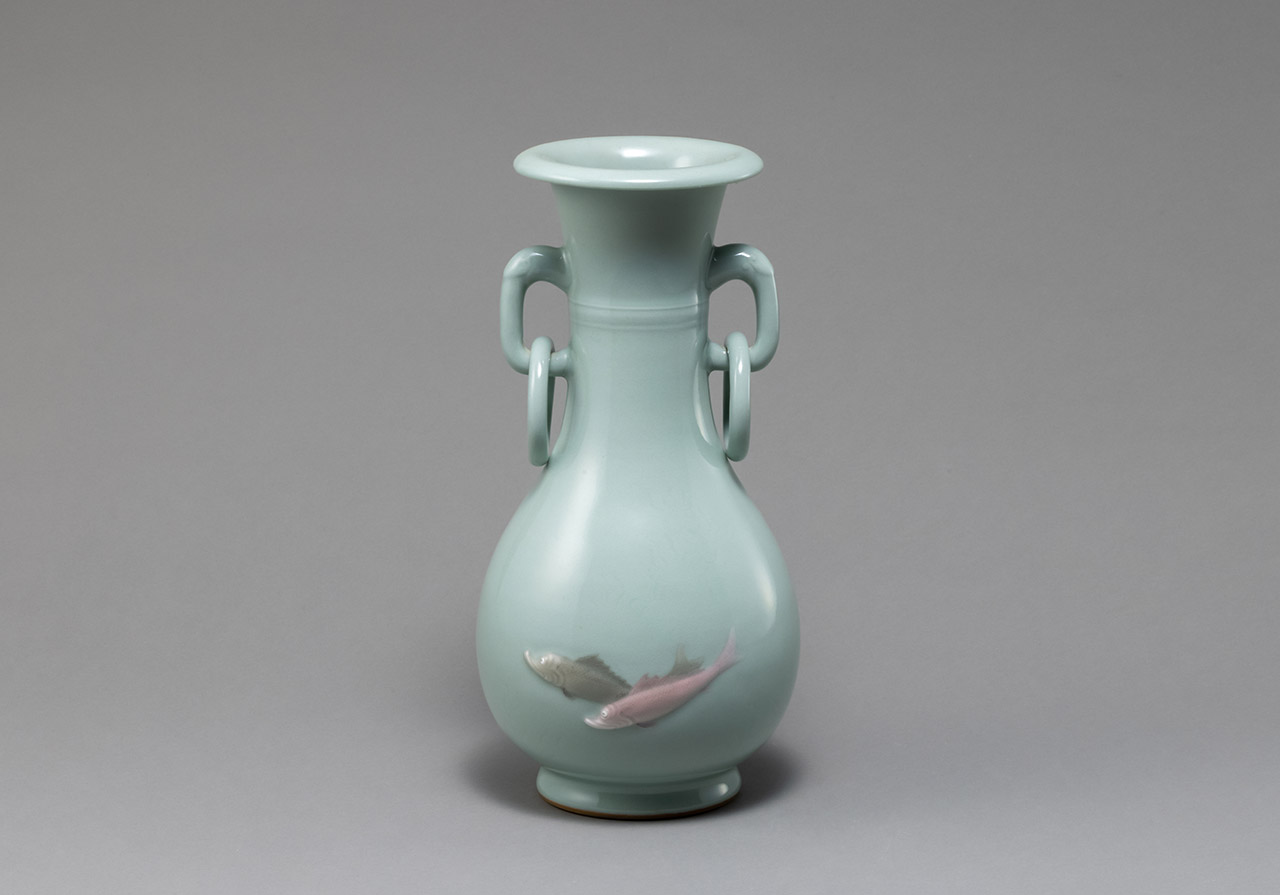
青瓷遊環紅魚花入 Photo:大道雪代
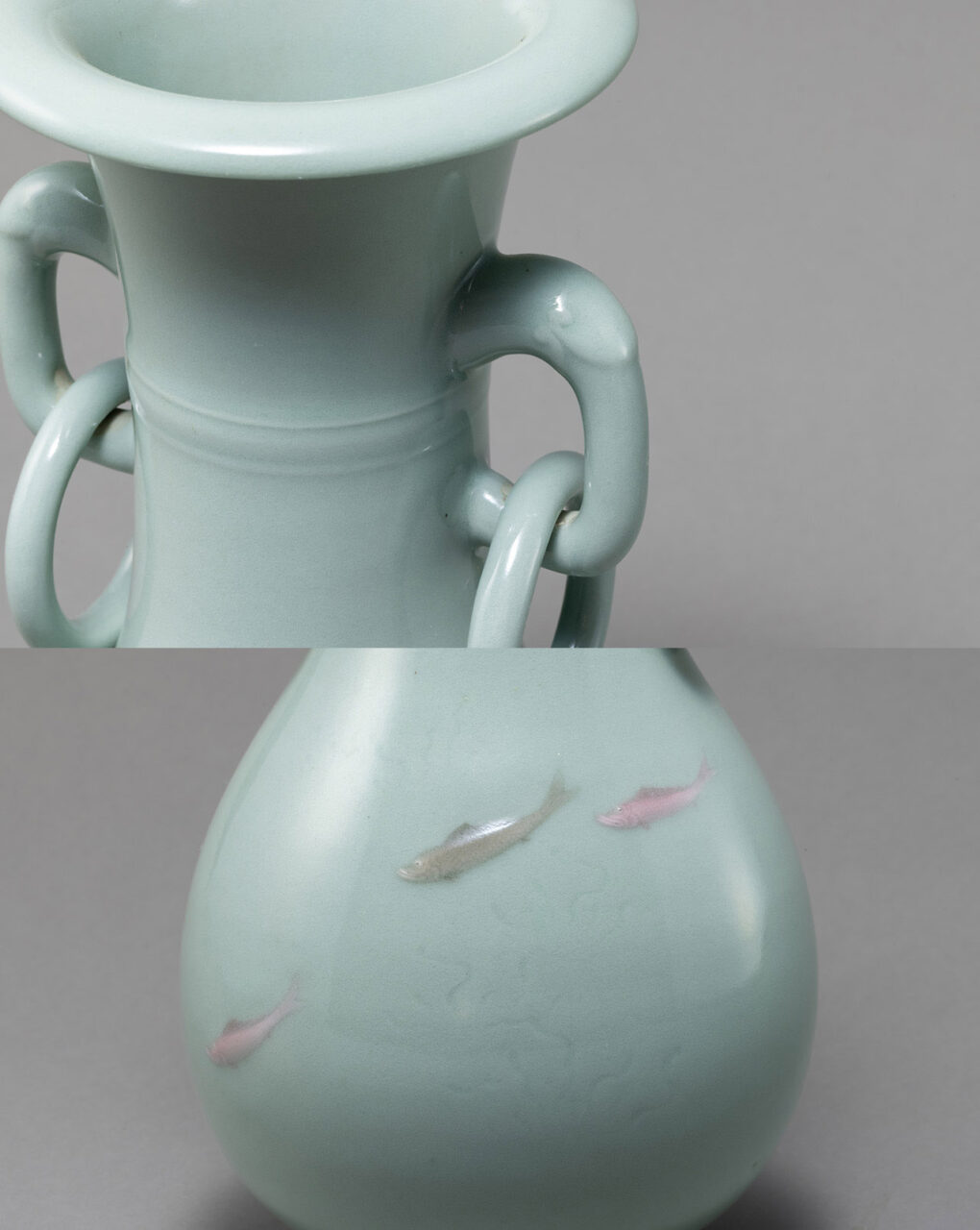
青瓷遊環紅魚花入 部分 Photo:大道雪代
展覧会概要
初代 諏訪蘇山 没後百年記念展 in 妙心寺 大雄院
〜初代蘇山の遺した石膏型を次代へ with KYOTO Design Lab〜
会期:2021年10月7日[木] – 10月11日[月]
会場:臨済宗大本山妙心寺塔頭 大雄院
(京都市右京区花園妙心寺町52 Tel.075-463-6538)
開場:10:00~16:00
特別拝観料:700円 高校生以下無料
見どころ
初代 諏訪蘇山 展:「没後百年 初代 諏訪蘇山 明治の技芸と秘蔵コレクション」
初代諏訪蘇山が探求し再現した諏訪家を代表する砧青磁の作品や、さまざまな技法で作られたバリエーションに富む作品など、初代の魅力を伝える名品が揃います。他にも初代蘇山を偲ぶ遺品や、諏訪家に保管されている明治・大正期の貴重な石膏型を合わせて展示します。
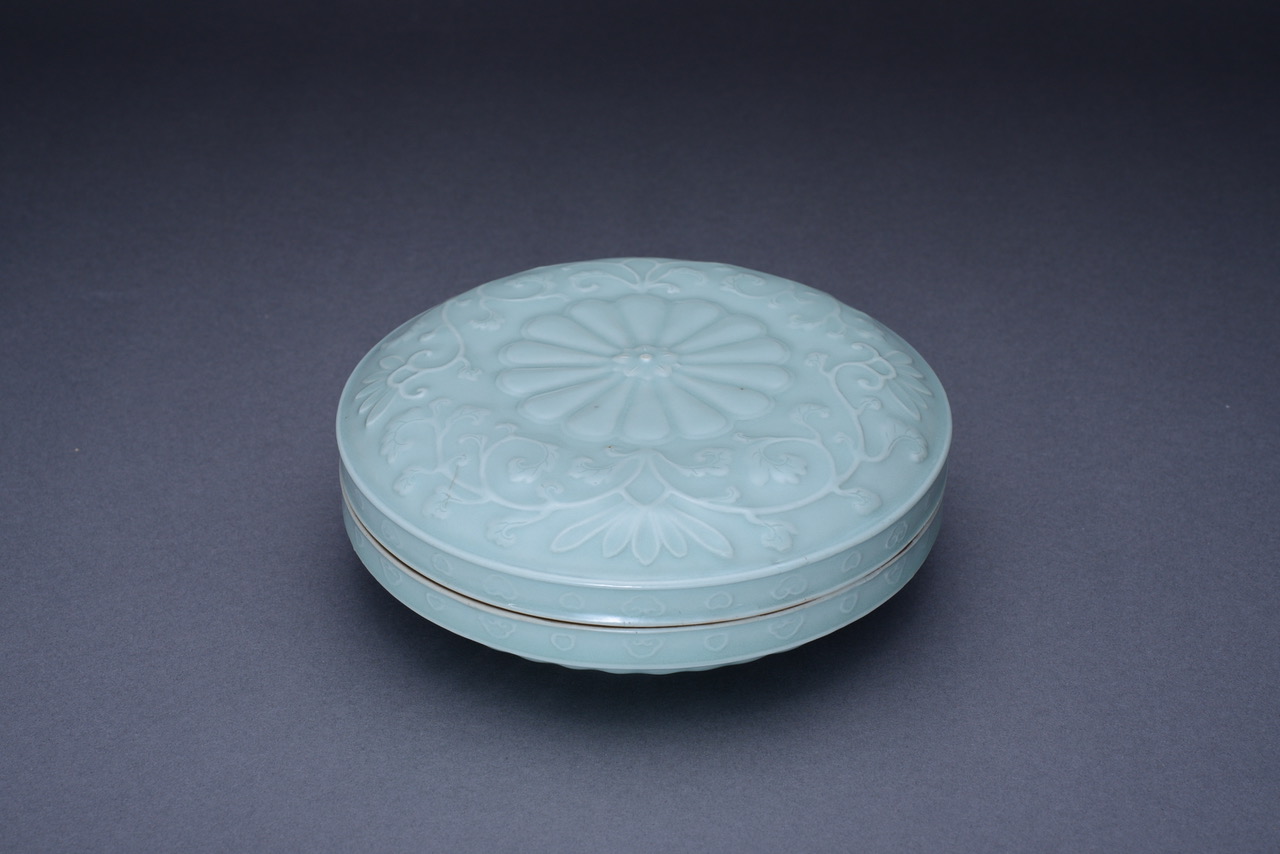
青瓷大香合
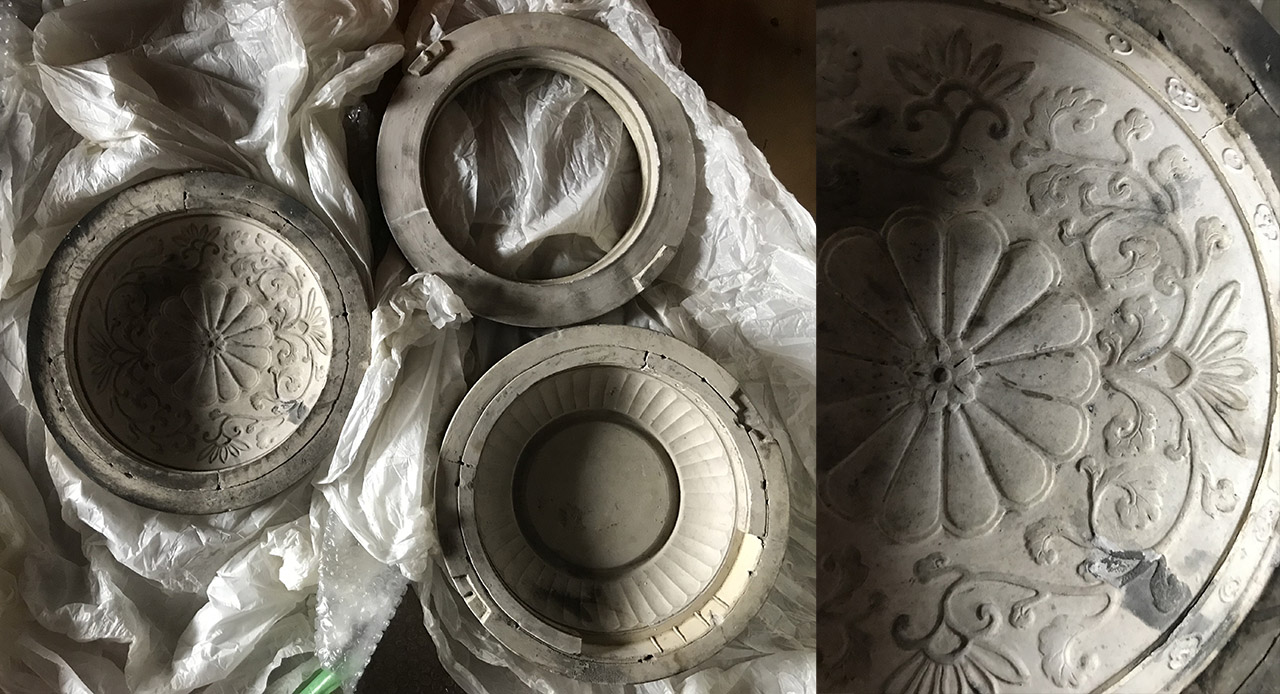
青瓷大香合 石膏型
諏訪蘇山×KYOTO Design Lab 展:「デジタルアーカイブと復元再生への道程」
四代 諏訪蘇山氏協力の下、現存する初代 諏訪蘇山作品の石膏型調査にはじまり、3Dスキャナを用いて測量、欠損や亀裂などの損傷をデジタルデータ上で補修を行った上、複数のプロセスによる復元型の作成に至る流れをご紹介します。また、この度実験的に制作したリプロダクトも合わせて展示します。
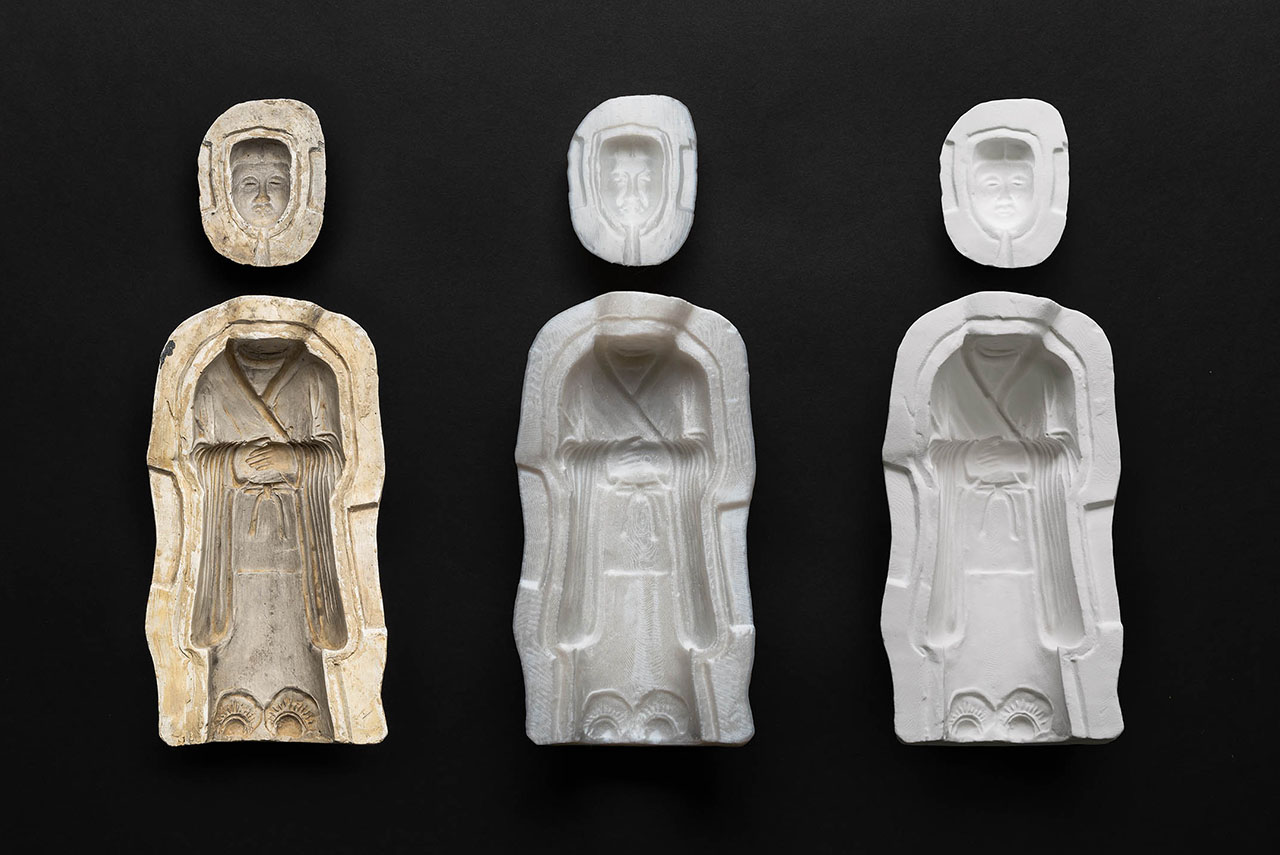
女人像置物オリジナル石膏型とテストピース Photo:高野友実
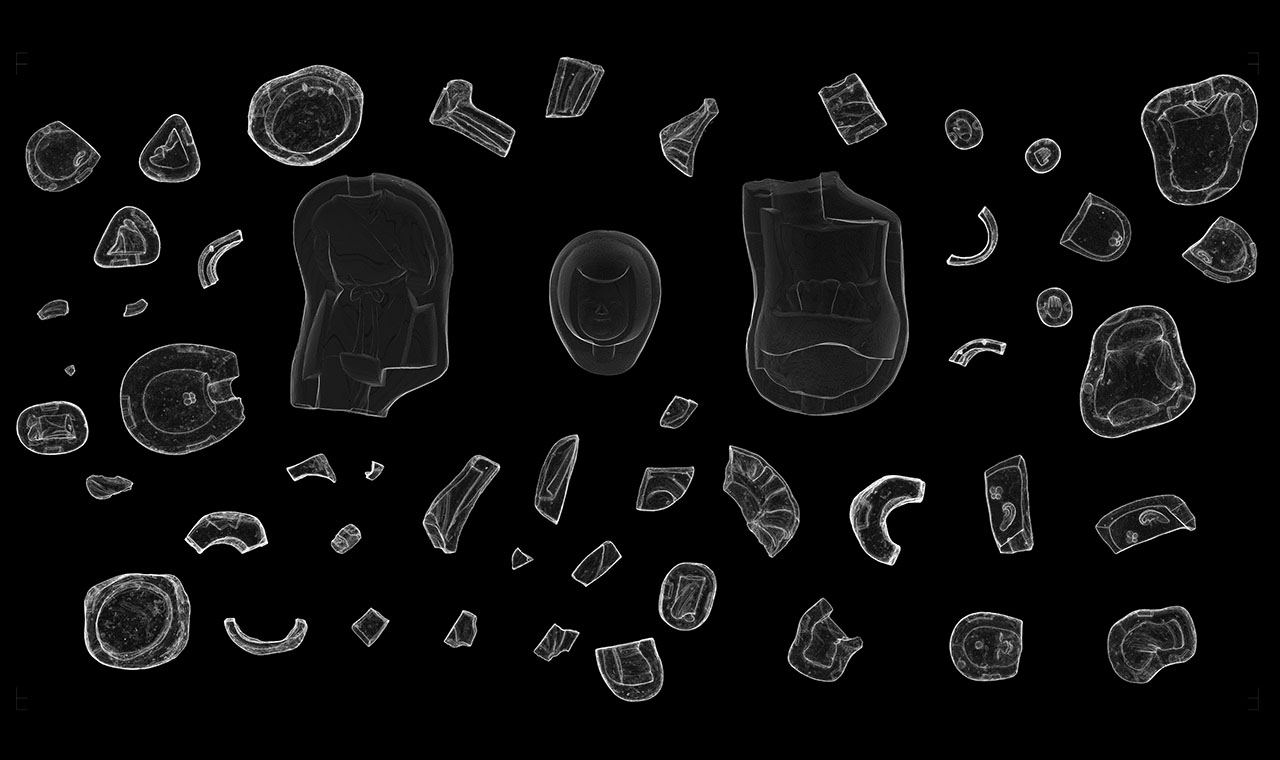
唐子置物の全パーツ3Dスキャン画像
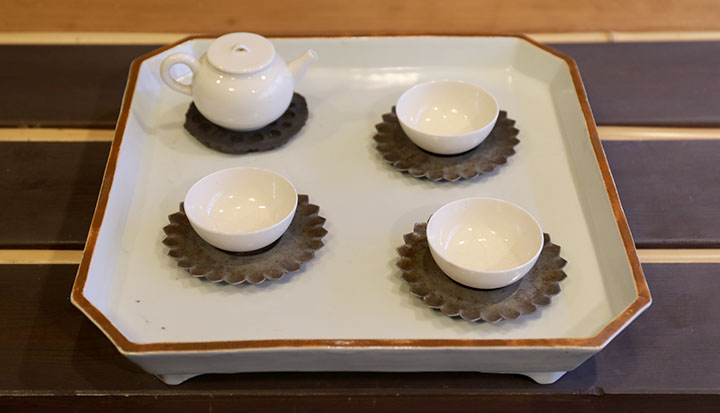
特別企画:「自然茶会 “瓷茶之路” 〜中国茶を蘇山のうつわで〜」
自然茶研究や、さまざまな茶会を提供しながらお茶の可能性を探究している「茶絲道」主宰の堀口一子氏を迎え、諏訪蘇山作の茶器による茶会を開催します。妙心寺境内では珍しい池のある庭園を眺め、諏訪家のルーツである加賀の水を用いて淹れた中国茶をゆっくり味わい、うつわを愛でるひとときをご提供します。
茶会開催日程
2021年10月8日(金)、9日(土)
各日1席目 13:00〜14:00
2席目 15:00〜16:00
(1席の人数 各5名)
会費:5,000円(税込)
予約方法:満席となりました。有難うございます。
info@d-lab.kit.ac.jp
特別企画:「初代諏訪蘇山AR in 大雄院」
メインビジュアルとなっている初代諏訪蘇山の作品「楽人埴輪」が、大雄院の指定ポイントでAR(拡張現実)化し、来場者のスマホやタブレット内に出現します。
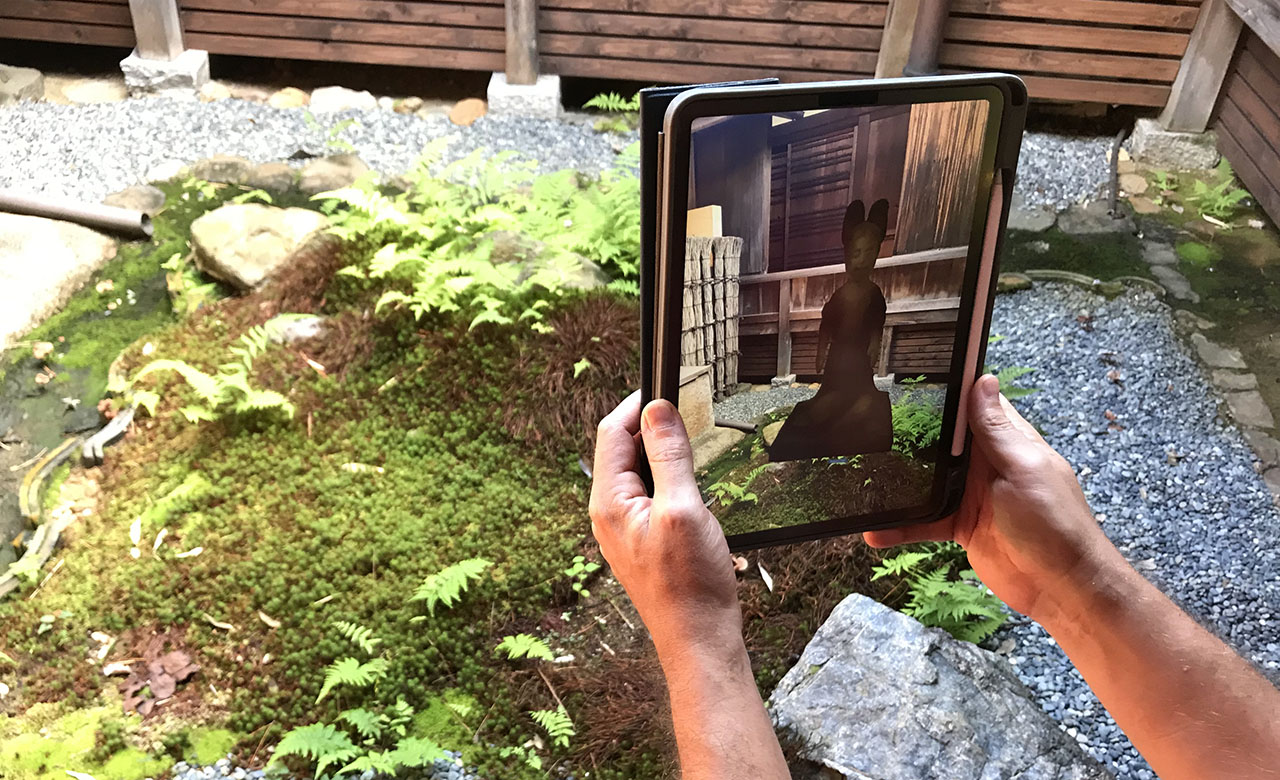
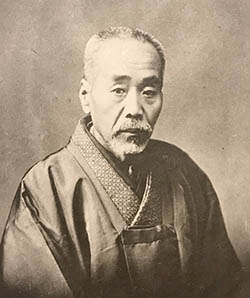
初代 諏訪蘇山
1851年(嘉永4)に加賀藩士の長男として現在の石川県金沢市に生まれる。明治維新後、彩雲楼旭山に陶画を学ぶ。その後、東京にて陶磁器製造業を営み、フェノロサに美術工芸を、化学においてはワグネルの薫陶を受ける。1880年(明治13)九谷陶器会社に招かれたのち、石川県工業学校の教員を経て京焼の陶工・錦光山宗兵衛の窯に招かれ1900年(明治33)に京都へ、1907年(明治40)に独立し京都五条坂に窯を開く。1917年(大正6)に帝室技芸員を拝命。1922年(大正11)没。姪の虎子が二代を継ぎ、その甥の修が三代を継ぐ。三代の三女が四代を継ぎ現在に至る。
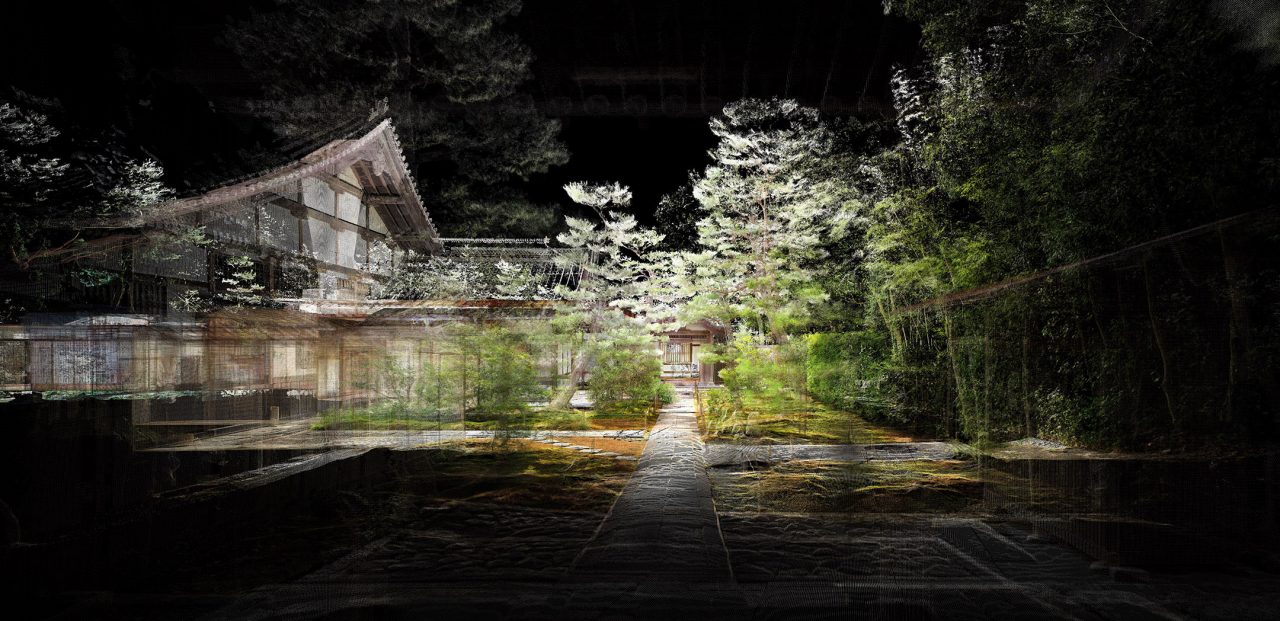
妙心寺 大雄院
日本最大の禅寺として知られる臨済宗妙心寺の46ある塔頭の一つとして、慶長8年(1603)石河市正光忠により創建。客殿、書院、庫裏、表門が京都府指定文化財となっている。客殿は帝室技芸員第一号でもある漆工芸家・柴田是真による襖絵が描かれたことでも有名で、その花の丸図を襖絵として復活させる「千種の花の丸襖絵」プロジェクトでも知られる。
妙心寺 大雄院
(京都市右京区花園妙心寺町52 Tel.075-463-6538 https://www.daiouin.com/)
交通
JR「花園駅」より徒歩10分
嵐電「妙心寺駅」より徒歩8分
市バス26系統「妙心寺北門前」より徒歩5分
ご来場いただく皆様へ
新型コロナウイルス感染症拡大防止のため、以下の点にご協力をお願い致します。
◯37.5度以上の発熱、せき、くしゃみなどの症状がある方や、体調の優れない方のご来場はお控えください
◯ご来場時に検温ならびにご連絡先の記入をお願い致します
◯混雑状況に応じて入場をお待ちいただく場合がございます
◯感染状況によって展覧会の中止や日程変更になる場合がございます
あらかじめご了承ください
© 2021 諏訪蘇山/京都工芸繊維大学 KYOTO Design Lab All rights reserved.
Suwa Sozan Ⅰ Pre Centennial Exhibition in Myoshinji Daiouin Temple
— The plaster mold left to the next generation by Suwa Sozan Ⅰ with KYOTO Design Lab
Restoring 100 years old ceramic molds by Suwa Sozan Ⅰ
Ceramic artist Suwa Sozan Ⅰ (1851-1922) is know for his highly appreciated “Celadon Sozan” ceramic works. The artwork is famous not only for its beautiful glaze color, but also for the fine decoration and form. Achieving both modeling and decoration and high reproducibility (mass production). However, the ancient traditional techniques are in danger of being lost and the number of successors is declining. Although the plaster molds of that time are carefully preserved in the current Suwa Sozan workshop, deterioration of 100 years old artworks is unavoidable.
In collaboration with Kyoto Institute of Technology KYOTO Design Lab [D-lab]
“The First Suwa Sozan Archiving Project” was launched in October 2019. The restoration process was performed by digital restoration based on the data of three-dimensional survey of plaster molds. The aim of the project is to restore and reproduce plaster molds by utilizing digital fabrication technology.
This exhibition will display the process and results to the public while providing an opportunity to pass on traditional techniques to the next generation. Following year 2022 will be the 100th anniversary of the death of Suwa Sozan Ⅰ. This is an excellent opportunity to learn about the first generation Suwa Sozan. Everyone is welcome to visit the exhibition and explore the charm of Suwa Sozan Ⅰ.

“Vase with two handles, design of fishes, celadon and underglaze enamels”. Photo:Daido Yukiyo

“Vase with two handles, design of fishes, celadon and underglaze enamels” Parts Photo:Daido Yukiyo
Suwa Sozan Ⅰ Exhibition: “100 years after death of Suwa Sozan Ⅰ — treasured Meiji artwork collection”
The exhibition presents masterpieces that convey the charm of Suwa Sozan Ⅰ. These works include Suwa Sozan Ⅰ Dadeumi Celadon art representing the Suwa family and an abundance of other artworks made by various techniques. In addition, relics reminiscent of the first Suwa Sozan and precious plaster molds from the Meiji and Taisho eras that have been stored by the Suwa family will be exhibited.
In addition, the exhibition will include relics left by the first Sozan and precious plaster molds from the Meiji and Taisho eras stored by the Suwa family.

Celadon large Incense container

Celadon large Incense container plaster molds
Suwa Sozan x KYOTO Design Lab Exhibition:
“Digital Archive and Restoring Journey”
Cooperating with Suwa Sozan IV the plaster examination of the existing works of Suwa Sozan was conducted using a 3D scanner. Damage such as defects and cracks were repaired by digital data. The exhibition will introduce the multi-step restoring process and re-products of the experiments.

Figurine of a woman & test piece Photo:Takano Tomomi

3D scanned image of all parts of the Karako figurine
Special Event: “Natural Tea Ceremony “瓷茶之路”- Chinese Tea from Suwa Sozan Tea Ware”
Tea ceremony where visitors can enjoy tea from Suwa Sozan tea ware will be conducted in collaboration with Horiguchi Ichiko, the president of “Tea Ceremony” who is exploring the possibilities of tea and offering tea ceremonies.
The ceremony guests are offered a special chance to enjoy the garden area of Myoshinji Temple while enjoying the tea brewed by water of Kaga with which the Suwa family is connected. Additional time will be provided for guests to inspect and appreciate the tea bowl.
Schedule of tea ceremony
Period October 8th (Friday) and 9th (Saturday), 2021
1st session each day 13:00–14:00
2nd session 15:00–16:00
Number of seats 5 each
Fee 5,000 yen (tax included)
Reservation method Please apply by email from the following mail address. We will inform you about the details.
info@d-lab.kit.ac.jp
Special Event: Suwa Sozan Ⅰ AR in Daiouin Temple
Suwa Sozan Ⅰ artwork used in the main visual “Rakujin Haniwa” will be made into AR (Augmented Reality) at the designated place of Daiouin Temple and can be viewed on the smartphones and tablets of the visitors.


Suwa Sozan Ⅰ
Born in 1851 (Kaei 4th year) in Kanazawa City, Ishikawa Prefecture, as the eldest son of the Kaga Domain. Suwa studied ceramic painting at Saiunro Asahiyama after the Meiji Restoration. After that, he worked in the ceramics manufacturing industry in Tokyo, studied arts and crafts with Fenollosa, and was taught chemistry by Wagner.
After working at Kutani Pottery Company in 880 (Meiji 13), Suwa started teaching at Ishikawa Technical Senior High School. After being invited to the kiln of Sobei Kinkozan, he moved to Kyoto in 1900. He became independent in 1907 (Meiji 40) and opened a kiln in Gojozaka, Kyoto. In 1917 (Taisho 6) he was appointed as an Imperial Household Artist. He died in 1922 (Taisho 11). His niece Torako continues the 2nd generation and nephew Osama will take on the 3rd generation.

Myoshinji Daiouin Temple
The temple was built by Masamitsu Tadashi, Ishikawa City in 1603 as one of the 46 towers of Rinzai Sect Myoshinji Temple, which is known as the largest Zen temple in Japan. The guest hall, drawing room, temple kitchen and front gate are designated and registered cultural properties by Kyoto Prefecture. The guest hall is also famous for the Fusuma paintings by the lacquer craftsman and the first imperial artist Shibata Zeshin. It is also known for the project “Thousand kinds of flower circles” reviving the flower circles as fusuma paintings.
Myoshinji, Daiouin Temple
(Kyoto, Ukyo Ward, Hanazonomyoshinjicho, 52 Tel.075-463-6538 https://www.daiouin.com/)
Transport
JR Hanazono Station 10 min.
Randen Myoshinji Station 8 min.
City Bus 26 Myoshinji Kitamonmae 5 min.
For Visitors
To prevent the spread of coronavirus we would ask for your cooperation as follows:
◯ Please refrain from visiting those who have symptoms such as fever of 37.5 degrees or higher, coughing, sneezing, or those who are not in good physical condition.
◯ Please measure your temperature and fill in the contact information when you come to the venue.
◯ You may have to wait for admission depending on the number of current visitors.
◯ The exhibition may be canceled or the rescheduled according to the situation as it continues. Thank you in advance for your cooperation.
© 2021 Suwa Sozan/Kyoto Institute of Technology KYOTO Design Lab All rights reserved.